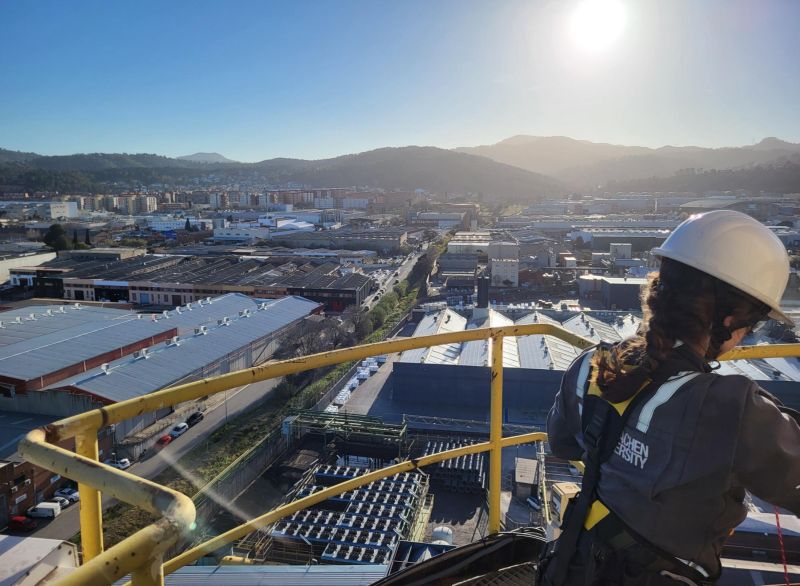
In the course of the TWINGHY project, the walking beam furnace at Celsa’s Castellbisbal steelworks will be partially converted to hydrogen firing with new fuel-flexible hybrid burners and oxygen lancing supported burners. In addition, the furnace’s instrumentation will be expanded to provide data to a digital twin. To access the retrofitting actions, precise knowledge of the baseline process prior to the retrofit is required. In November 2023, colleagues from the project partners Celsa, Fives, the Barcelona Supercomputing Center (BSC) and the Department for Industrial Furnaces and Heat Engineering (IOB) met in Castellbisbal to visit the plant and prepare the measurement campaign, that generates the data of the reference process. In February 2024, IOB carried out a week of these measurements to collect data beyond the permanently installed sensors, allowing a comprehensive characterization of the process.
The unusually long journey brought additional challenges to the planning of the measurement campaign. In close coordination with Celsa, ports for the sensors were manufactured in the weeks beforehand and the necessary equipment was shipped from Germany to Spain. On site, the furnace was equipped with the additional measurement technology. One of the highlights was the measuring position on the chimney of the furnace. Secured in climbing harnesses, our colleagues installed the connections for gas analysis at a height of 50 meters and were rewarded with uniformly developed velocity profiles in the chimney flow and an impressive view over the area alongside.

During the following days, temperatures were recorded at representative locations on the furnace walls and the flue gases were analyzed for temperature, volume flow, and gas composition within the furnace chamber and at the stack. This data is supplemented by an instrumented billet trial. For this purpose, a steel billet was equipped with thermocouples and a transient temperature distribution was obtained throughout the process.
The data generated will be used in the further course of the project to set up energy balances and CFD simulations of the system and to train the digital twin of the furnace. We look forward to make use of the results in the project and to carry out the next measurement campaign once the furnace has been retrofitted.
Author: Johannes Losacker
After his Master’s in Mechanical Engineering at RWTH Aachen University, Johannes is pursuing his Ph.D. at the Department for Industrial Furnaces and Heat Engineering. He is involved in European projects promoting the use of hydrogen in high-temperature heating processes and focuses on combustion CFD and on-site measurements.